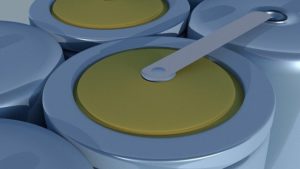APPLICATIONS OF TECHNOLOGY:
- Electric Vehicles
- Energy Storage and Battery Manufacturing
BENEFITS:
- Enhanced stability compared to their single-element counterparts
- Scalable and tunable fabrication
- Greater performance than silicon or graphite anodes
BACKGROUND:
High entropy oxide materials (HEOs) could be used as drop-in replacements for graphite (the market for which China currently dominates) and graphite/silicon anodes. They are defined as materials that have configurational entropies above 1.5R. Contrary to traditional oxides which contain one or two principle cations, HEOs generally contain five or more metals in an equimolar ratio in the same oxide phase. HEOs boast high capacities and a number of unique properties, such as enhanced stability, new functionalities, and tunable properties. HEOs are a relatively new area of research, and previous methods to synthesise these materials have shown challenges related to roundtrip efficiencies and rate capability.
TECHNOLOGY OVERVIEW:
Researchers at Berkeley Lab are developing a class of HEOs which provide the potential for greatly increased energy densities. This solvothermal fabrication is a method performed at a lower temperature, and allows for better control of particle size and morphology, providing more tunability and scalability than traditional high temperature solid-state methods. These anodes utilize low-cost and widely available metals, are stable at room temperature, and have the potential to increase round trip efficiency. Compared to traditional silicon and graphite anodes, HEOs provide higher capacities and longer cycle stabilities.
DEVELOPMENT STAGE:
TRL – 1
PRINCIPAL INVESTIGATORS: Marca Doeff, Ki-Hun Nam
IP Status:
Patent pending
Additional information:
Chem. Mater. 2024, 36, 4481−4494
ACS Appl. Mater. Interfaces 2025, 17, 15, 22529–22545
OPPORTUNITIES:
Available for licensing or collaborative research

